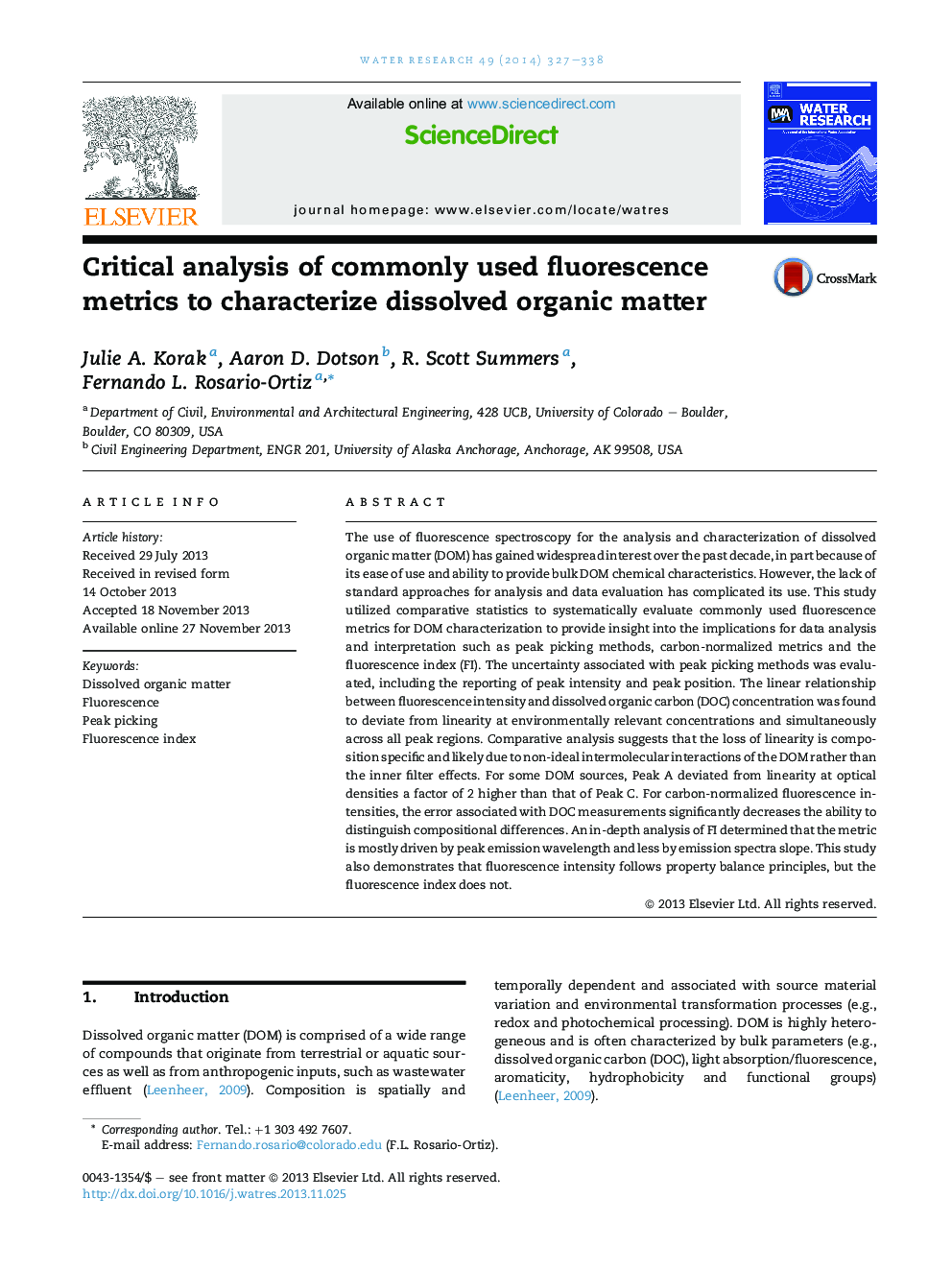| Article ID | Journal | Published Year | Pages | File Type |
|---|---|---|---|---|
| 4481713 | Water Research | 2014 | 12 Pages |
•Fluorescence data analysis methods for characterizing DOM are evaluated.•Peak intensity follows conservative mixing but fluorescence index does not.•Fluorescence–DOC linear relationship deviations are composition specific.•Fluorescence Index largely driven by emission peak location not curvature.
The use of fluorescence spectroscopy for the analysis and characterization of dissolved organic matter (DOM) has gained widespread interest over the past decade, in part because of its ease of use and ability to provide bulk DOM chemical characteristics. However, the lack of standard approaches for analysis and data evaluation has complicated its use. This study utilized comparative statistics to systematically evaluate commonly used fluorescence metrics for DOM characterization to provide insight into the implications for data analysis and interpretation such as peak picking methods, carbon-normalized metrics and the fluorescence index (FI). The uncertainty associated with peak picking methods was evaluated, including the reporting of peak intensity and peak position. The linear relationship between fluorescence intensity and dissolved organic carbon (DOC) concentration was found to deviate from linearity at environmentally relevant concentrations and simultaneously across all peak regions. Comparative analysis suggests that the loss of linearity is composition specific and likely due to non-ideal intermolecular interactions of the DOM rather than the inner filter effects. For some DOM sources, Peak A deviated from linearity at optical densities a factor of 2 higher than that of Peak C. For carbon-normalized fluorescence intensities, the error associated with DOC measurements significantly decreases the ability to distinguish compositional differences. An in-depth analysis of FI determined that the metric is mostly driven by peak emission wavelength and less by emission spectra slope. This study also demonstrates that fluorescence intensity follows property balance principles, but the fluorescence index does not.
Graphical abstractFigure optionsDownload full-size imageDownload high-quality image (227 K)Download as PowerPoint slide
